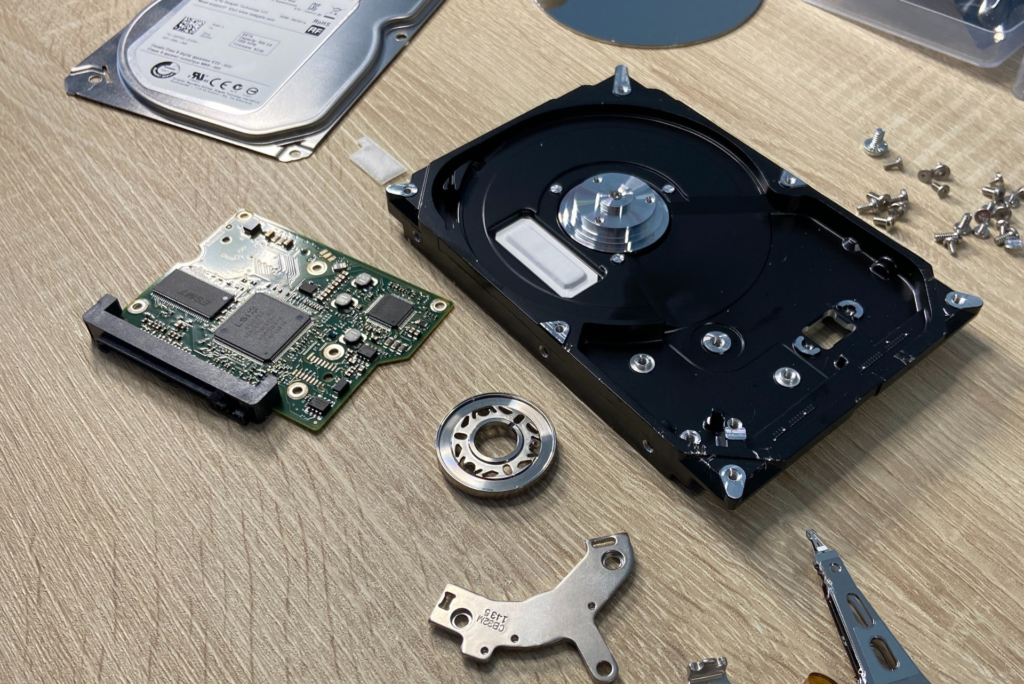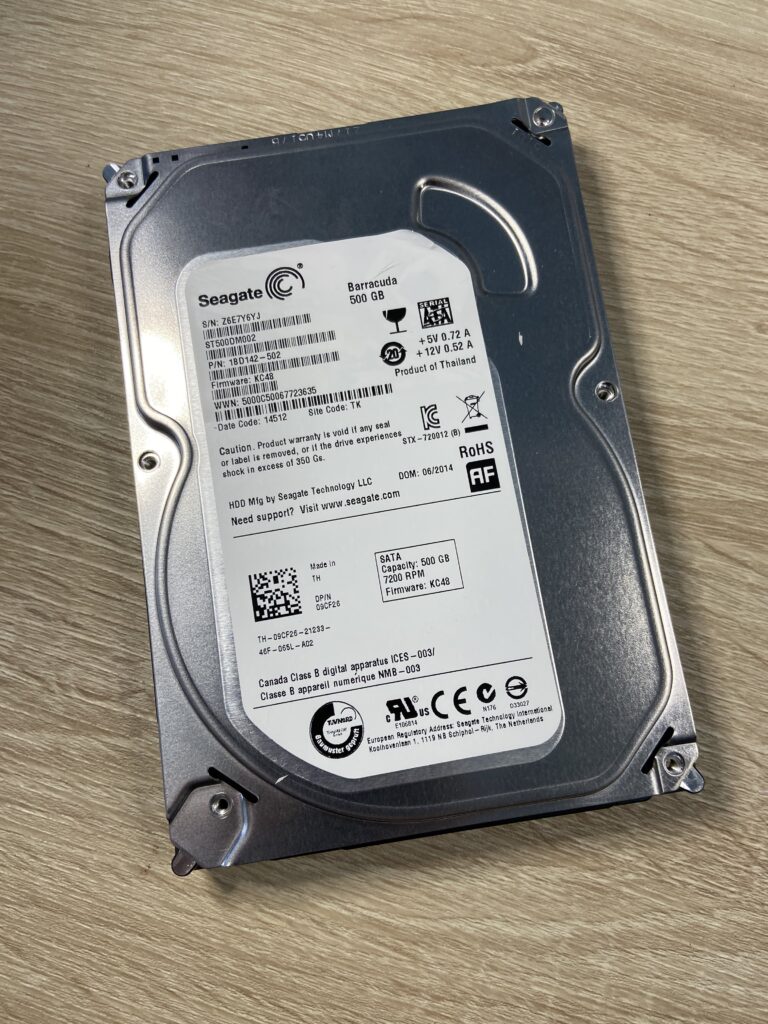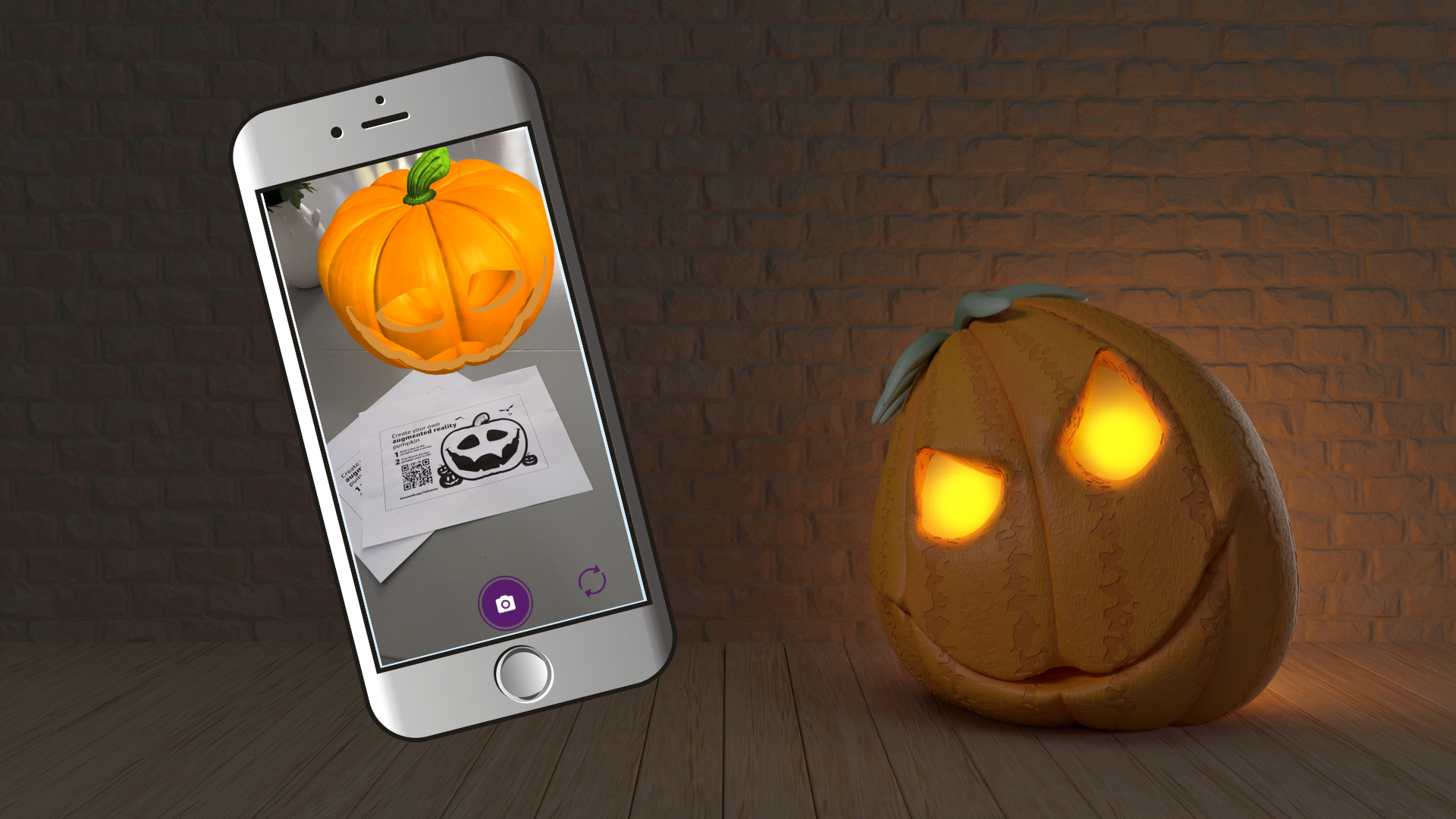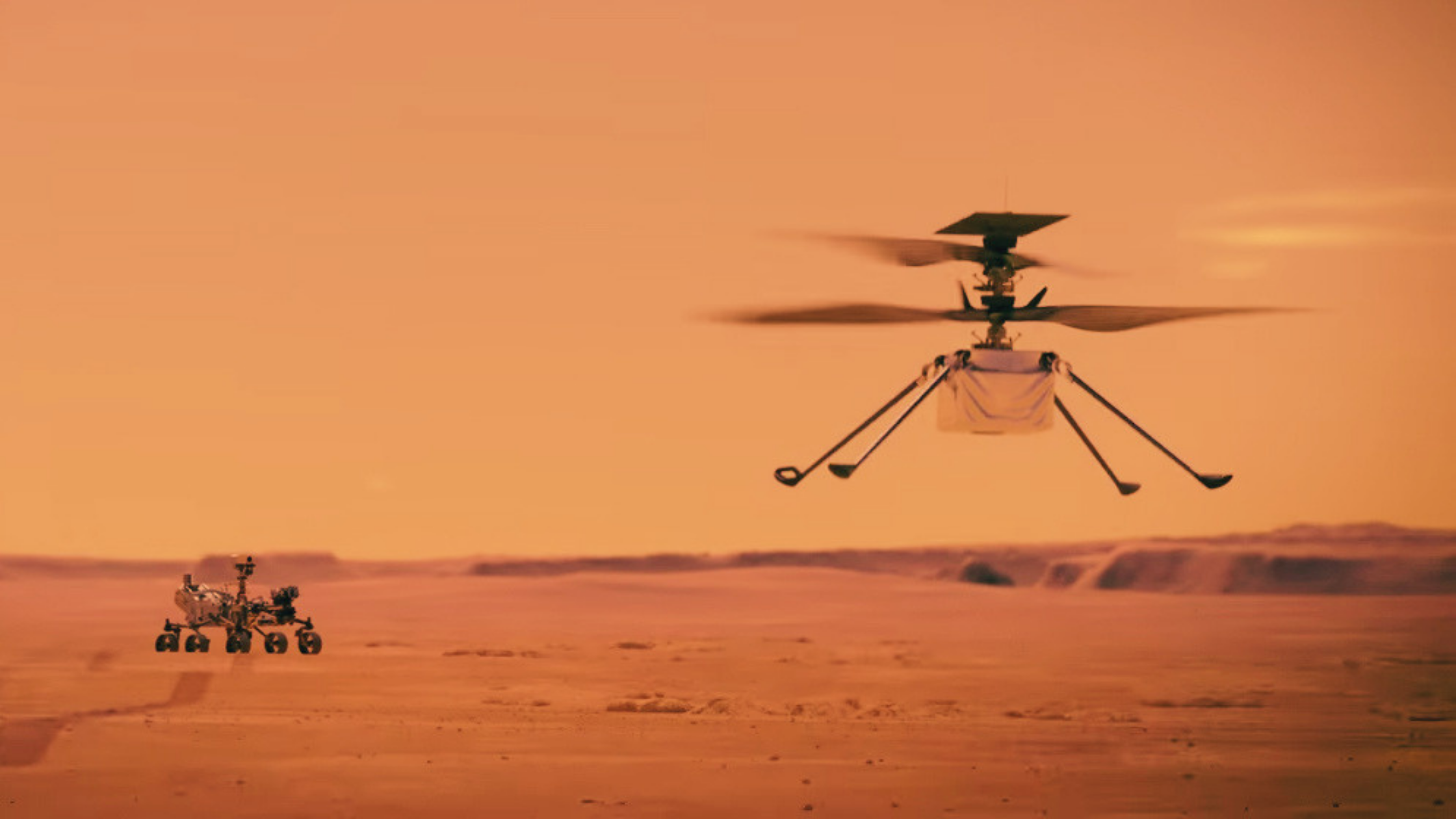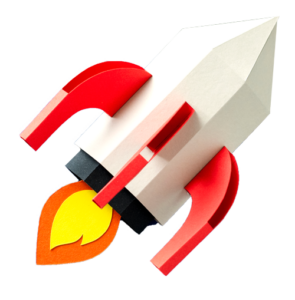Do you know what is inside your hard disk drive? I got a little curious this month and decided to take one apart but only after it crashed. I love to tinker and thought it would be good to dissect one.
IMPORTANT: Do not do this with your current computer’s working hard disk drive.
I recently had a hard disk drive go “bad” or crash. It become inoperable but the most important data was backed up. This is probably the time where I should remind you to be sure you back up your data. Don’t realize this AFTER the fact. Stop right now….go and be sure to back up your data or if you are, make sure it is then backed up recently!
So, one afternoon my itch to “tinker” was in full effect and I decided to take it apart. I also needed a new prop for my college classroom so they to can benefit from seeing the inside of a hard disk drive.
The Hard Disk Drive (HDD)
Hard disk drives (HDD) can be found installed on many different computing devices such as desktop computers, notebook computers, and server computers to name a few. You can also find some in gaming systems.
Hard disk drives have evolved over the years by providing more storage, faster retrieval times, and decreased prices. To this day, I still tell the story of expanding my IBM PS/2 to a 20MB hard drive. Yes, I said….20 megabytes!!! At that time, I had to save up nearly $200 to expand that storage!
HDD’s are considered “non-volatile” storage since what you store on the disk remains there when the power is off. It is typically where you install and store your computing device’s operating system such as Windows, Apple’s MacOS, or a variation of the Linux operating system.
Solid State Drive (SSD)
HDD’s are different that the newer Solid State Drive (SSD) and let’s be clear, this is the direction that this storage is going. Initially, the SSD’s had less storage and cost much more than their HDD counterpart. The main gain was access speed. In other words, when you retreive a program or data from an SSD, it was done far quicker making for a better computing experience.
I won’t go into more detail other than to say an SSD does not have mechanical parts like an HDD is less prone to breaking or “failing”. Solid state refers to the fact the storage drive is built using electrical circuits instead of moving parts.
The Hard Disk Drive (HDD) Parts
HDD’s come in a variety of storage amounts from 500MB (megabytes) in older computers to over 2 Terabytes in newer computer systems.
The physical dimensions or the “form factor” of a typical HDD is 2.5 inches to 3.5 inches and fit into a “bay” in a desktop computer. Many desktop computers allow for expansion which means they provide extra empty bays to add an HDD for extra storage. SSD’s can also fit into these “bays” quite easily as they are slimmer and lighter. They are also faster and becoming cheaper to manufacturer.
Basic Functions of a Hard Disk Drive
Your hard disk drive uses magnetism to store its programs and data in binary format (1’s and 0’s). As stated, SSD’s are quickly replacing these drives in new computing devices but these drives are still widely available.
These steps below, although simplified, give you an idea of the activity when you double click your program icon or save/update a file you are using.
- The platter spins at a high speed (RPM – revolutions per minute) providing fast data seek time.
- The arm moves back and forth across the platter reading and writing (storing) data.
- It is precisely controlled via the voice coil which then passes the data to the contacts connected to the underlying circuit board (Microcontroller Unit).
- This unit is connected to the computing device mother board where it is then processed for displaying on your monitor or interacting with other computing components.
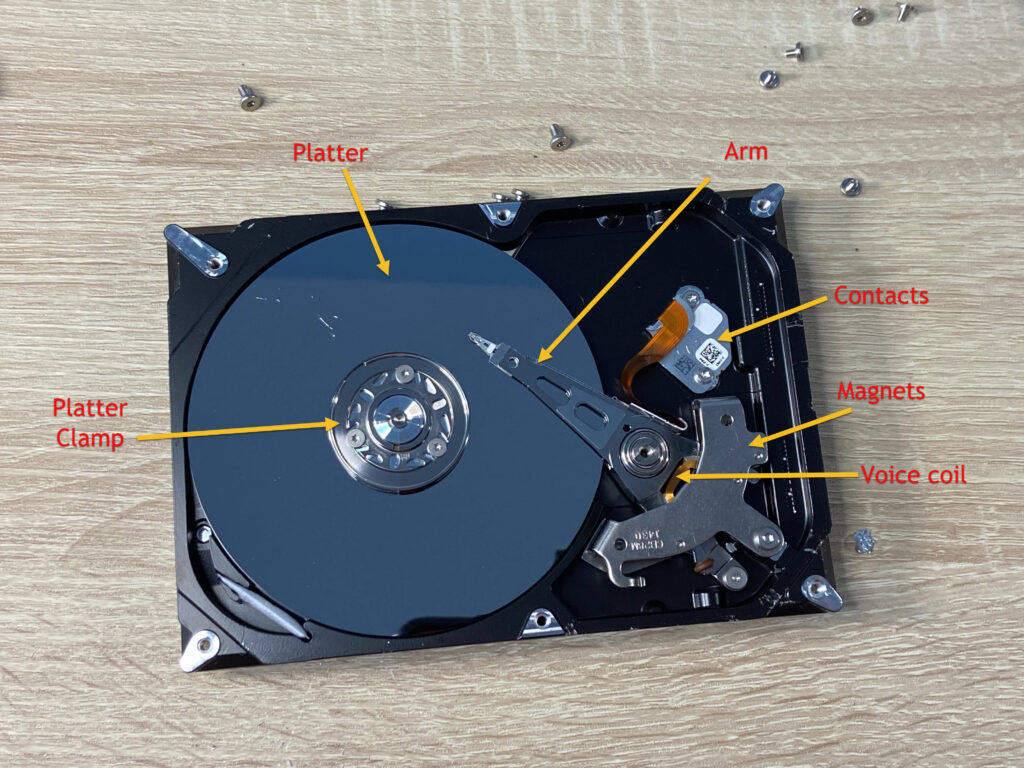
Disassembling a Hard Disk Drive
Again, do not do this with your current working hard disk drive. This particular hard disk drive crashed and it was time to upgrade.
Taking this hard disk drive gives you an idea of the parts and how they come together. I hope you enjoy this quick Youtube Short!
Happy coding!!!!

Mr. Fred
Let Me Help You

If you are a teacher or someone looking to help others learn to code, let me help you.

